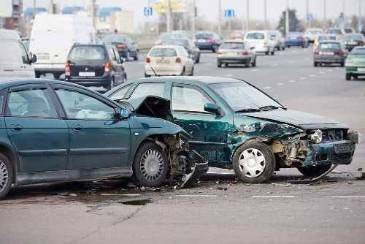Pile-up accidents are common on highways, where vehicles are traveling at high speeds and need more time and distance to stop. Drivers may not have enough time to avoid hitting the car ahead. They may hit the brakes, swerve into another lane, or go into a skid. Worse still, they may swerve into oncoming traffic, causing a head-on collision.
 Chain reaction crashes involving three or more vehicles are more likely to occur when hazardous weather conditions, such as snowstorms in Colorado, reduce road visibility. When multiple vehicles are involved in a single pileup, where does liability lie? In Colorado, the answer can be complicated.
Chain reaction crashes involving three or more vehicles are more likely to occur when hazardous weather conditions, such as snowstorms in Colorado, reduce road visibility. When multiple vehicles are involved in a single pileup, where does liability lie? In Colorado, the answer can be complicated.
How Does Liability Work in Multi-Car Crashes?
Like many states in the United States, Colorado has at-fault auto insurance laws. People injured in auto accidents can hold other parties liable for their damages, provided they can prove fault. Fault is determined by negligence, or the failure to use reasonable care in a particular situation.
All drivers have a duty to operate their vehicles in a reasonably safe manner, which includes following the rules of the road. When they fail to do so, they can be held responsible for damages that result from their negligence. For example, a driver may be found negligent and liable for injuries if he or she was:
- Speeding or driving too fast for conditions
- Texting, talking on the phone, or otherwise driving distracted
- Tailgating
- Running a red light or a stop sign
- Failing to yield the right-of-way
- Changing lanes unsafely
- Driving under the influence of alcohol or drugs
When a crash involves multiple vehicles in a chain reaction pile-up, determining liability can be complicated. The driver found responsible for the first crash may be held liable for subsequent collisions, as well. But other drivers may have some share of responsibility for the accident, depending on the circumstances. For example, a driver somewhere in the chain may have been following too closely or texting while driving, contributing to the likelihood of a crash. Fault for a multi-car pileup may end up being shared by multiple drivers.
Modified Comparative Negligence
Under Colorado modified comparative negligence laws, a percentage of fault for an accident can be assigned to the plaintiff, as well as to the defendants in a car accident claim, and plaintiff’s recovery is reduced by that percentage. If the plaintiff’s percentage of fault is equal to or greater than the combined fault of the defendants, the plaintiff gets nothing.
For example, if you were entitled to $100,000 in damages for the injuries you sustained in a multi-vehicle accident, but the jury assigned you 10% of the fault for the crash, your award would be reduced by 10% to $90,000. If you had $100,000 in damages but were found to be 50% at fault for the accident, your recovery would be zero.
Why You Need a Lawyer
It can be difficult, even for insurance companies, to establish the cause of a multi-car collision or the liability of each of the drivers involved. Many of these cases end up in court. Like all traffic accidents, multiple-vehicle accidents require evidence, and this requires a thorough investigation of the crash.
Our Colorado Springs personal injury lawyer at The Bussey Law Firm, P.C. is a seasoned litigator with a history of success for our clients. Attorney Timothy Bussey has been rated 10.0 Superb on Avvo and awarded membership in the Million Dollar Advocates Forum. After a serious pileup accident, we are dedicated to helping you obtain the compensation you deserve, so you can focus on your recovery.
We can investigate your accident, obtain and preserve evidence, assess the full extent of your damages, negotiate skillfully with insurance companies on your behalf, and fight for your rights in court if necessary. Call us at (719) 475-2555 to schedule a free initial consultation.
